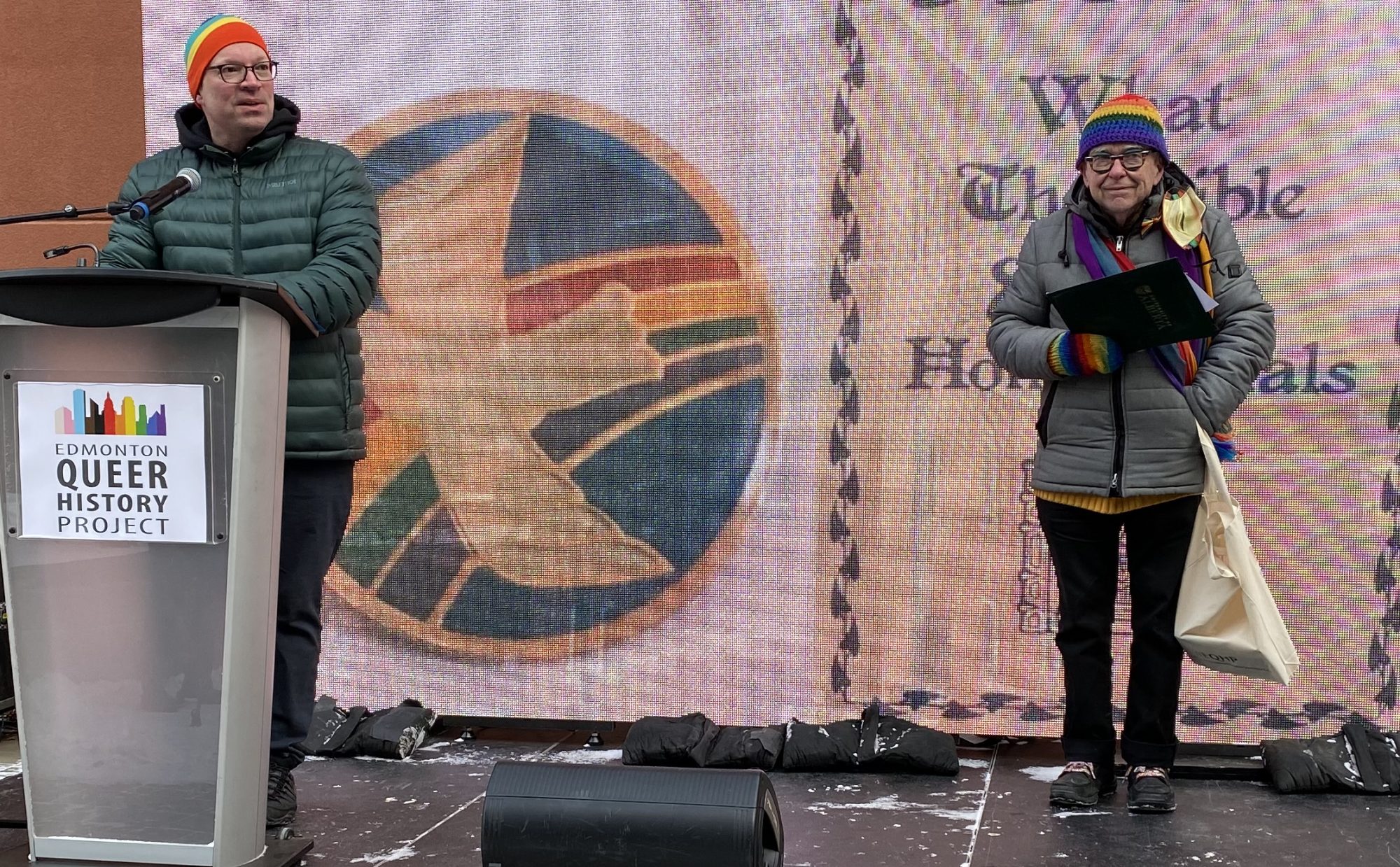Dr. Kristopher Wells imagines this: A traveller arrives at the Edmonton International Airport. When the visitor gets to the baggage claim, that person will be able to pick up a map of the important places in this city’s LGBTQ2S+ history.
Basically, a tour of these important places would be as prominent as ads for the West Edmonton Mall or posters promoting sporting events and festivals.
“When you land in Edmonton, I want people to see Edmonton’s Queer history,” says Wells.
Wells is the lead investigator for the Edmonton Queer History Project, MacEwan University professor and Canada Research Chair (Tier II) for the Public Understanding of Sexual and Gender Minority Youth. He’s played a major role in organizing The Queer History Project’s walking tour of 27 downtown sites. Maps and the accompanying online resource for the tour are set to be available by early March.
The walking tour, which will take 90 minutes to two hours to complete, will begin at Michael Phair park, and move to the sites of nightspots like Club 70 and the Roost, to the local headquarters of the AIDS Network. Walkers can get the broad strokes by using the map, or they can access the digital archive for deeper dives into each site.
“We’ve written pretty much encyclopedic descriptions of these 27 sites, five to 10 pages each,” says Wells. “We didn’t shy away from anything. Our community is getting older, and some of these knowledge keepers, we want to make sure we capture and document it before the knowledge is lost.”
As well, it was important to bring in voices that aren’t white.
“We tried to be as intersectional as we can, because this is a white, colonized history, even in the LGBTQ community.”
Wells know time is running out when it comes to getting first-person testimony from major events such as the decriminalization of homosexuality in Canada (more than 50 years ago) to the Pisces Bathhouse Raid (41 years ago).
“We talked to people who were arrested 40 years ago and still have records,” says Wells of the Pisces raid, where in 1981 nearly 50 police officers raided the Edmonton bathhouse and arrested 56 people.”The government still hasn’t expunged those records.”
